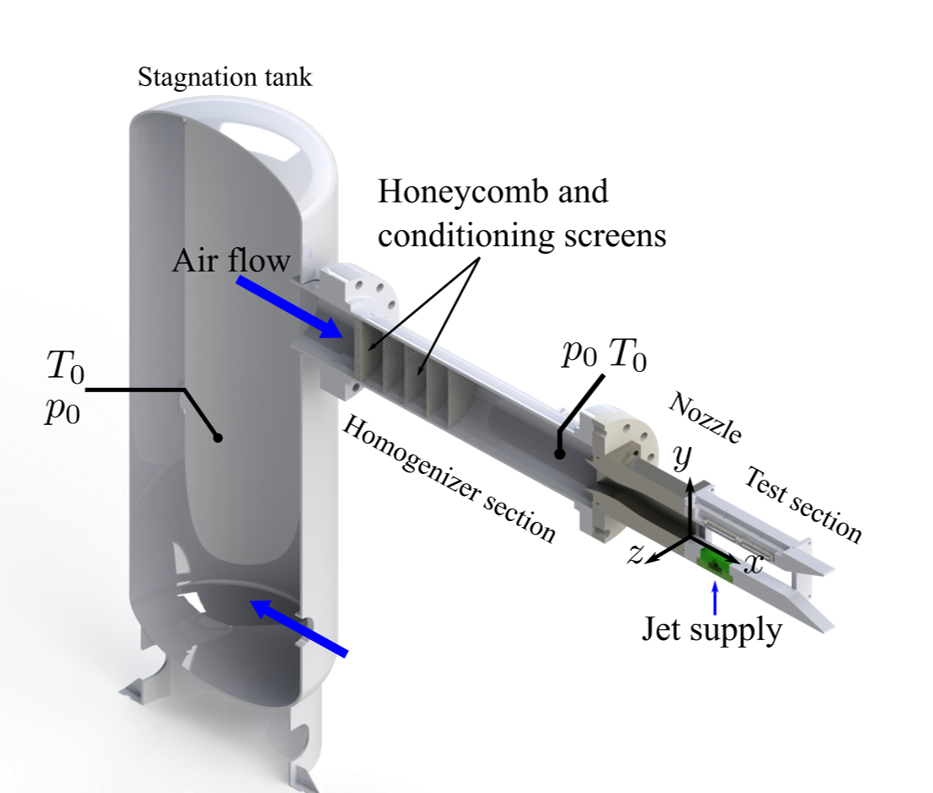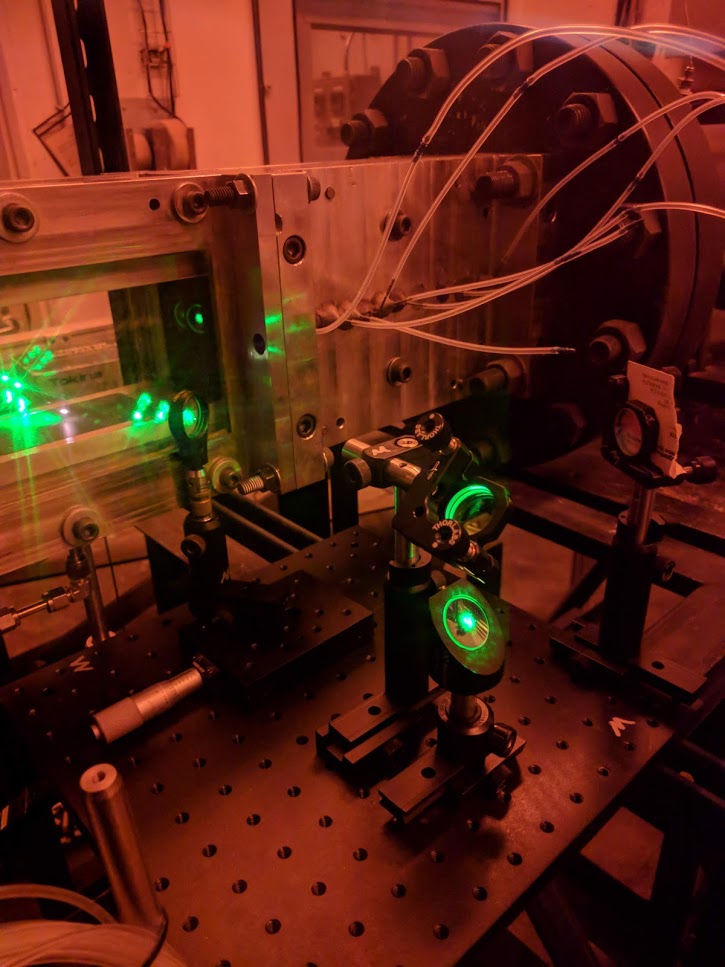Mixing and ignition in supersonic flows¶
Building on my experience with low speed flames, my PhD work revolved around the mixing of a sonic jet in a supersonic crossflow and the forced ignition of this non-premixed system. The research is fundamental in nature but has important implications for the design of supersonic and hypersonic transport systems, retro-propulsion and the design of future experiments. The questions I answered with this research are roughly as follows:
What is the influence, if any, of jet fluid properties on entrainment and mixing?
Having answered this question, where would forced ignition be most efficient in the flowfield?
What is the evolution of an ignition kernel at these most optimal locations in relationship to flowfield properties?

CAD rendering of my supersonic blow-down windtunnel facility¶
The facility I worked on is a supersonic blow-down windtunnel with a Mach 1.7 nozzle, that I designed myself. The jet manifold and its heating system have also been designed and assembled by myself, with up to four gas cylinders providing the necessary mass flow rates. To gather the necessary experimental data for the first part, I used a combination of Particle Image Velocimetry (PIV), concentration measurements from Mie-scattering, and Schlieren. For the second part and third part, I added CH*-chemiluminescence, OH*-chemiluminescence, and OH Planar Laser Induced Fluorescence (PLIF). A pulsed infrared laser provided a forced, discrete ignition location. The usage of a laser ignition system also allowed me to freely choose any location in the flow to be seeded with a localized, hot kernel of plasma, instead of being confined to the wall, as is often the case with traditional spark plug ignition systems. The measurements using OH-PLIF yielded a well resolved measurement of potential combustion products.

Instanteneous, mean and root-mean-square images of a nitrogen jet in a supersonic crossflow in my facility.¶
During my PhD studies I had the pleasure to mentor several undergrad students, which helped develop my teaching and communication skills further. The most significant outcomes of the undergrad work are the development of a Background Oriented Schlieren system and the publication of a conference paper analyzing modelling and optimization approaches to jets in supersonic crossflows for propulsion applications. I am also grateful for the support of my own experiments and data processing.

Laser time! The ignition system in action. Here still with a green laser instead of the more recently used infrared one.¶
Having succesfully defended my thesis in July 2020, my full PhD thesis can now be found under this LINK.
Publications related to this work can be found under the following links: